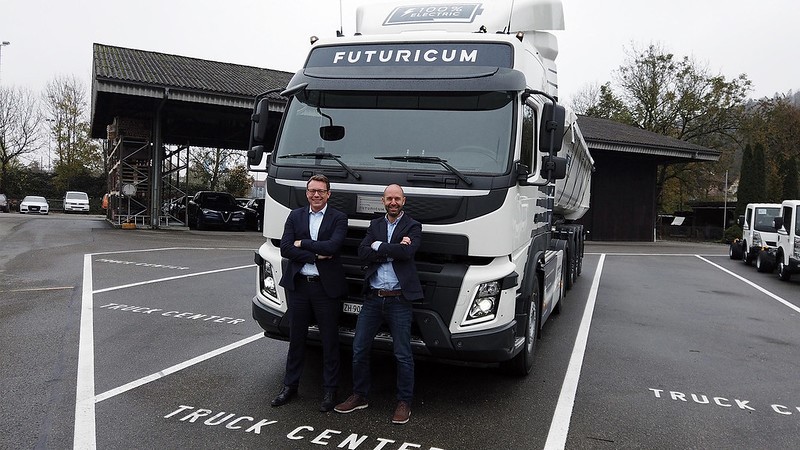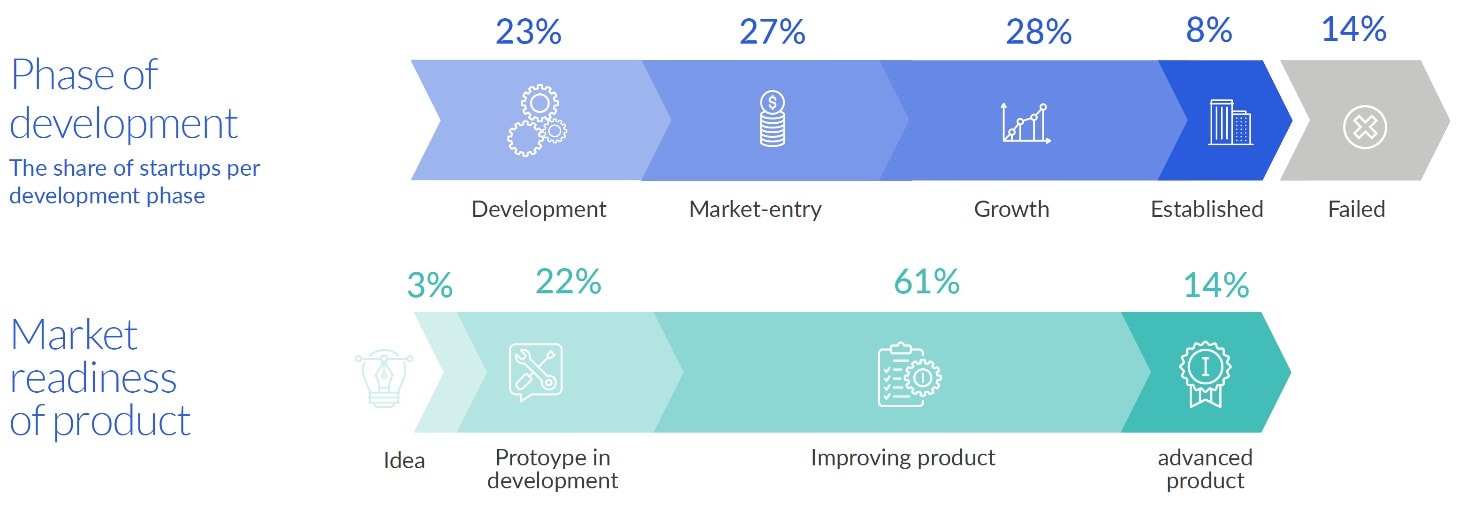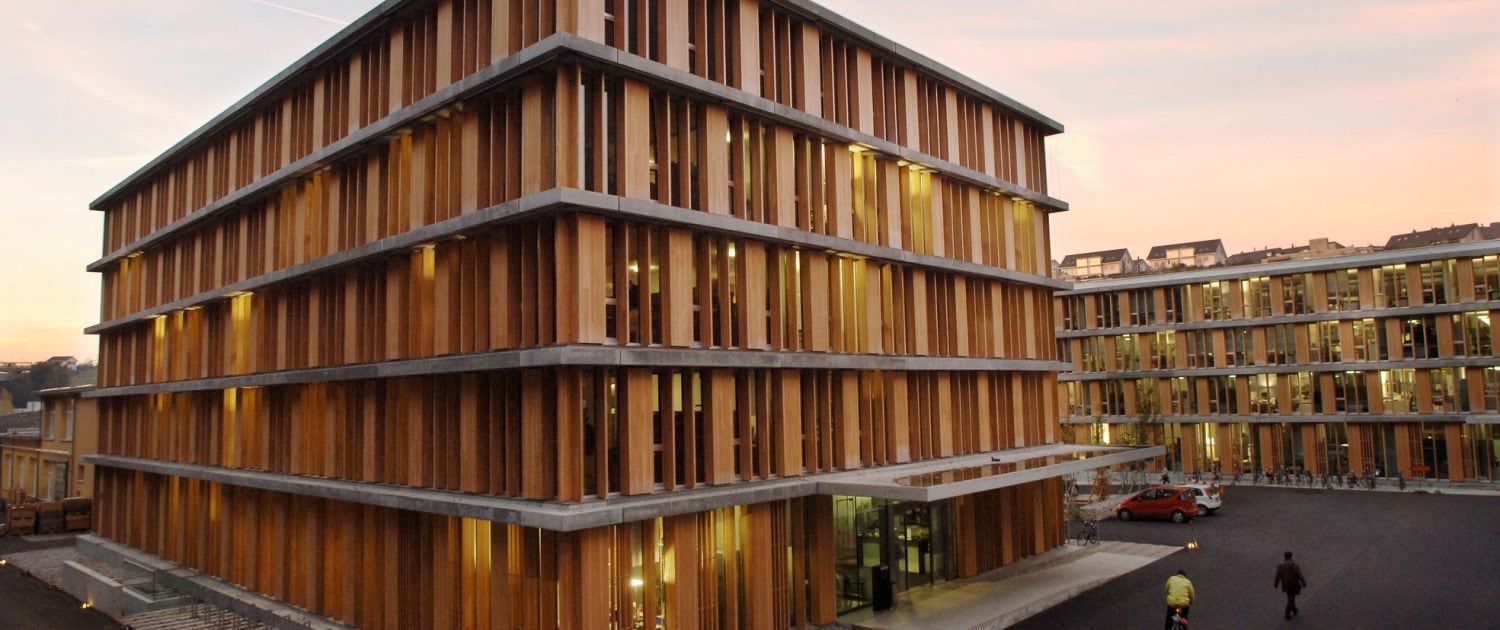Die Digitalisierung gewinnt im Energiebereich stetig an Bedeutung. Die Welt wird vernetzter, Cyber-Gefahren nehmen zu und künstliche Intelligenz ist in aller Munde. Das Digital Innovation Office im Bundesamt für Energie (BFE) hilft mit, diesen digitalen Wandel aktiv zu gestalten und zukunftsfähige Regeln aufzustellen. Weiterlesen
Schlagwortarchiv für: BFE
La Svizzera è leader nell’uso dell’energia geotermica per il riscaldamento e la produzione di acqua calda sanitaria. Per un utilizzo sostenibile dei sistemi con sonde geotermiche è opportuno prevederne l’impiego anche per il raffrescamento estivo. La Scuola universitaria professionale della Svizzera italiana (SUPSI) ha esaminato a titolo illustrativo il potenziale del cosiddetto «geocooling» in un immobile residenziale a Lugano. Weiterlesen
David gegen Goliath: Open Innovation, Hackathons und Digitalisierung für die Energiestrategie 2050
Um zeitgenössischen Herausforderungen wie dem Klimawandel, der Dekarbonisierung und der Transformation des gesamten Energiesystems entgegen zu treten, braucht es clevere Lösungen – eine Mammutaufgabe. Doch die technologischen Möglichkeiten verbessern sich stetig. Es gilt, sie zu nutzen, um Ideen zu entwickeln und diese mit Hilfe der Digitalisierung in erste fassbare Lösungen zu überführen – in den Bereichen der Stromversorgung, der Gasversorgung, der Mobilität, der Städte und vielen mehr. Vielversprechende Lösungen können dann gemeinsam mit Industrieakteuren, Universitäten oder als Start-Up weiterentwickelt werden. Weiterlesen
Leise Abfallsammlung – Schlussbilanz zum Projekt «Futuricum»
In Zukunft kann es je nach Wohnort sein, dass man morgens nicht mehr durch den Lärm des Kehrrichtlastwagens aufgeweckt wird. Zu verdanken ist dies der Firma Designwerk GmbH, welche mit dem «Futuricum Collect 26E» ein elektrisch betriebenes Sammelfahrzeug entwickelt hat. Auch wenn der 26-Tonnen-Lastwagen auf den ersten Blick jedem anderen Kehrrichtlastwagen gleicht, so erkennt man an den reduzierten Lärmemissionen und der fehlenden Abgaswolke, dass man es hier mit einer Innovation zu tun hat. Weiterlesen
Taiwan’s energy system is currently facing an enormous transformation with ambitious goals for 2025 to promote renewables, phase-out nuclear power, diminish the use of coal and to foster energy efficiency. Taiwan is heavily industrialized, the electricity production is based on fossil fuels and nuclear power, and the per capita CO2-emissions are rather high (see box “key facts on Taiwanese energy policy” below). In 2016, the government of Taiwan defined the strategic goal of its Energy Transition Policy: The goal stated to become nuclear-free by 2025. Also by 2025, the electricity production portfolio shall consist of 50 percent gas, 30 percent coal and 20 percent renewables. Thus, the installed capacity of renewables shall more than quadruple within less than ten years. These goals are crucial not only to phase-out nuclear power, but also to attain climate policy goals. Is Taiwan likely to succeed in reaching the goals for renewables, and what is their approach to foster energy efficiency?
According to Taiwan’s goal, renewables shall account for 20 percent of the electricity production by 2025 – compared to less than 2 percent in 2016. The government set the goal of installing a capacity of 20 GW of photovoltaics and of 5.5 GW of offshore wind power by 2025. In addition, hydro, biomass, onshore wind and, to a lesser extent, geothermal and fuel cells shall be developed, too. This is an ambitious increase in capacity installed within a short period of time (for comparison: Switzerland currently has roughly about 1.2 to 1.4 GW installed PV and wind energy). Yet, the Taiwanese goals for renewables seem to be within reach:
- The Taiwan Strait, the sea west of the main island, has great wind resources. Taiwan has positioned itself as an entry point for offshore wind developers to conquer a growing Asian market. Among others, wind developers have to incorporate the local supply chain. It is estimated that the new offshore-wind business might create around 30’000 jobs. As of 2019, offshore wind farm developers have already been selected through feed-in tariffs and auctioning for a capacity of 5.5 GW. This process was not always smooth and precise remuneration has been subject to change and negotiation. However, it now seems likely that these capacities are going to be developed. Guaranteed prices amount to somewhere between USD 0.1-0.2 / kWh, varying for projects and depending on the number of hours of production per year.
- Taiwan is famous for its electronic industry and semiconductor production. From a technical point of view, it was therefore a small step to develop one of the biggest global photovoltaics industries. On a global level, companies in Taiwan are the second-biggest producers of solar cells and solar modules. Fostering solar energy in Taiwan is thus a chance for the local economy, too. Sunshine resources are abundant, particularly in the southern region. The government set goals to develop solar energy within a short time, with an emphasis on ground level (17 GW by 2025) as well as on rooftops (3 GW). So far, the yearly additionally installed solar power capacity is on track to reach the 2025 target. As in other places, feed-in tariffs were used and then reduced over time (from up to USD 0.45 to 0.1 / kWh). In addition, the system was optimized through a bidding process for projects over 10 kW in 2011.
Energy efficiency is addressed by a wide array of regulation, incentives and further measures. Whereas energy consumption and CO2-emissions are still growing from year to year, the growth has been decoupled from the overall economic growth. Thus, progress has been made in decreasing energy intensity. It is not possible to name all measures taken, but what follows highlights a few: in energy intensive industries, regulations on energy intensity targets and minimum energy performance standards for appliances have been introduced. Furthermore, combustion engine cars will be banned by 2040 and motorcycles by 2035. Taiwan has no significant car industry, but is an important producer of electrical motorcycles. The ban is also seen as a measure to increase the integration of renewables in the energy system, as parked vehicles can be used for storage. The Green Building Labeling System sets an incentive to use green materials and efficient cooling by imposing a minimum standard for new buildings and allowing a higher floor area ratio for particularly green buildings. There is also a tradition of creating innovative research and development clusters, such as through the Industrial Technology Research Institute or Shalun Smart Green Energy Science City. However, as elsewhere, many challenges remain, among them the existing building stock as well as medium and small enterprises.
Overall, the ambitious goals for renewables are rather likely to succeed, given the existing natural resources, the political will, the financial means invested, and thanks to solar power and wind energy becoming big business opportunities. As in many places around the world, energy efficiency is more difficult, relies on a broad set of measures that address different sectors, which although, to some degree, also create business opportunities. It will be interesting to follow how Taiwan will further tighten measures in order to reach long-term climate policy goals, how this will affect local business and, last but not least, how it will shape the energy policy beyond 2025.
Kurt Bisang, Deputy Head of Energy Efficiency and Renewables Division, SFOE
The author visited several public entities, research institutes and companies in Taiwan in late fall 2019.
Key facts on Taiwanese energy policy: With a dense population of 24 million people and as an island with almost no own sources of fossil fuels, Taiwan’s power supply system relies for over 98 percent on import. Fossil energy sources are dominant both in the overall energy mix (92 percent), and in electricity generation (84 percent). CO2-emissions stem to an important part from the industrial sector (49 percent), followed by electricity generation, transportation and the residential sector. Given the industrialized economy and an electricity production that is based on fossil fuels, 12t of CO2 are emitted per capita (all numbers as of 2018). In 2015, Taiwan set the goal to reduce its greenhouse gas emissions by 50 percent until 2050 (compared to the 2005 level). A major climate policy measure is substituting coal power, currently amounting to 48 percent of electricity generation, by gas. Terminals for liquefied natural gas are extended.An important issue is the electric industry reform. Since 1946, electricity was provided by the state-owned, vertically integrated Taiwan Power Company (Taipower). Since 1994, independent power producers were entitled to provide a limited share of electricity. In the next years, Taipower is going to be separated into a power generation and a power grid company.
An important point is the role of nuclear energy in Taiwan. In 1990, three nuclear power plants with two blocks each produced more than 50 percent of electricity in Taiwan. With growing demands, this sunk to 20 percent around 2002. Currently, two plants are still running, that produce around 10-15 percent of electricity used in Taiwan. Nuclear energy has been controversial in Taiwan for years. The construction of a forth nuclear plant was stopped in 2014, mainly due to public protest. From 2016 onward, the ruling political party decreed to phase-out nuclear power plants by 2025. In a public referendum in 2018, the majority of voters repealed this fixed date for the phase-out. However, in early 2019, the government argued that given various problems related to procedures, unresolved treatments of radioactive waste and lack of local support, neither a life-extension of existing plants nor finishing the construction of the forth plant would be feasible.
Wie sollen Menschen bis in die ferne Zukunft über ein Lager mit radioaktiven Abfällen informiert werden? Eine Expertengruppe der internationalen Kernenergie-Agentur Nuclear Energy Agency (NEA) zum Thema «Wissensmanagement und Markierung geologischer Tiefenlager» ist zum Schluss gekommen, dass ein ganzes Wissenserhaltungssystem benötigt wird, um der gestellten Aufgabe gerecht zu werden. Weiterlesen
Innovation-Monitor: lebendige Schweizer Startup-Szene im Umwelt- und Energiebereich
Im Januar 2020 hat der Swiss Environment and Energy Innovation Monitor, ein Kollaborationsprojekt der ZHAW und eqlosion, die neusten Zahlen zur Entwicklung der Schweizer Umwelt- und Energie-Startups zwischen 2008 und 2019 veröffentlicht. Das Projekt wurde vom Bundesamt für Energie BFE und vom Bundesamt für Umwelt BAFU unterstützt. Die Analyse beinhaltet eine Auswertung von knapp 550 Startups und zeigt, dass die Schweiz im Bereich Umwelt und Energie über eine erfreulich lebendige und kontinuierlich wachsende Startup-Szene verfügt. Viele der gesammelten Informationen zu den Startups und Projekten sind auf der Innovation Monitor-Plattform für die Öffentlichkeit frei zugänglich. Weiterlesen
The Swiss initiative on Hydropower at IRENA Assembly – a success story
The Ministerial Plenary Session on Hydropower, held at the 10th General Assembly (GA) of the International Renewable Energy Agency (IRENA) on 12 January 2020, was a key success for the Swiss delegation. Switzerland, together with the International Hydropower Association (IHA), the World Bank, Norway and other IRENA member countries, co-organized the Ministerial Plenary Session. It built on the first ever IRENA Hydropower Event, which was initiated by Switzerland and took place at the 9th GA in January 2019. Weiterlesen
Auswahlverfahren, Bau und Betrieb eines geologischen Tiefenlagers für radioaktive Abfälle können sich auf die Gesellschaft und Wirtschaft der Standortregion auswirken – positiv oder negativ. Um diese Auswirkungen rechtzeitig zu erkennen und darauf zu reagieren hat das Bundesamt für Energie BFE in Zusammenarbeit mit den Standortregionen und -kantonen ein Konzept für ein Monitoring erarbeitet (vgl. Blog vom März 2017). Weiterlesen
«L’approvisionnement en électricité et le gaz nous occuperont en 2020.»
L’année 2020 s’annonce intensive pour l’Office fédéral de l’énergie. Durant les prochains mois, de nombreux dossiers devront être traités ou préparés dans les bureaux. Le directeur de l’OFEN, Benoît Revaz, revient sur les objectifs de l’office en vidéo. Weiterlesen
Kontakt
Bundesamt für Energie
Pulverstrasse 13
3063 Ittigen
Postadresse:
Bundesamt für Energie
3003 Bern
Telefonnummern:
Hauszentrale +41 58 462 56 11
Pressestelle +41 58 460 81 52
 BFE
BFE Benedikt Vogel
Benedikt Vogel Bundesamt für Energie
Bundesamt für Energie Kurt Bisang
Kurt Bisang BFE
BFE
 IRENA
IRENA
 BFE
BFE